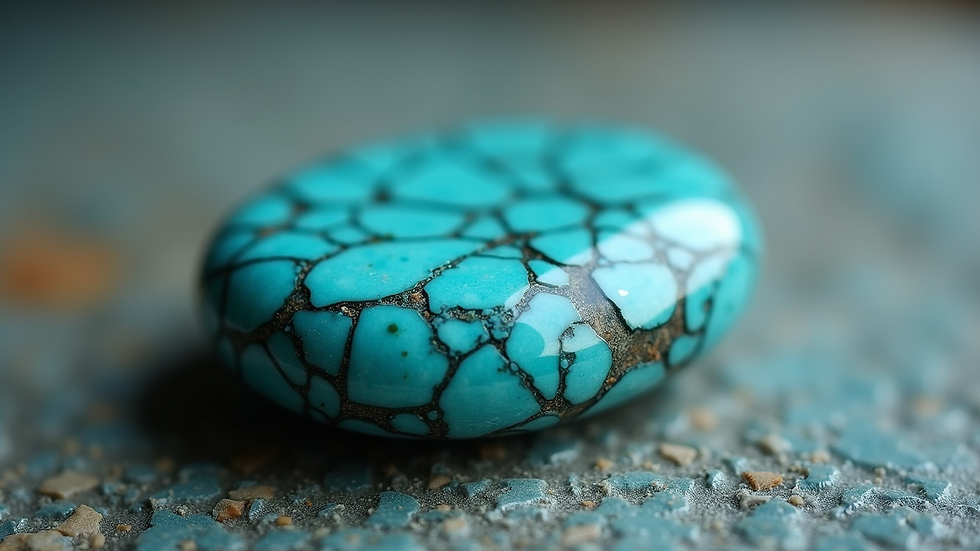Glass Turquoise
- Jan 24, 2021
- 3 min read
Turquoise has one commercial application; its use in jewelry. Natural turquoise, that stone which does not need to be treated for color and hardness in order to be commercially viable, is very rare, difficult to find, and therefore costly. This dichotomy presents a challenge for those who wish to manufacture mass market jewelry. There is simply not enough natural turquoise to provide the economies of scale in cost and production necessary for a commercially viable product.
This challenge is not new. From the earliest days of tourism in the southwest there has been a consistent comment to jewelry traders, “This is very beautiful but do you have anything less expensive”. The earliest Indian jewelry created beginning in the late 1880’s was for native consumption and served as a store of value in addition to being a form of status and beauty aesthetic. This early jewelry was often heavy since the weight would enhance its value as a means of credit in the pawn system of the Indian traders. Turquoise was first introduced in the early 1890’s but was used sparingly as it was difficult to obtain. Much of the early stone used by the Navajo was obtained from the Santo Domingo (Kewa) who lived next to the turquoise mines at Cerrillos. Most of the turquoise mined at this time was sold to east coast jewelers for use in Victorian style jewelry.
As the tourist market developed during the first two decades of the 20th century a lighter style of jewelry developed better suited to both aesthetic appeal and pocketbooks. Fred Harvey was instrumental in promoting tourism through their restaurants and hotels and also Native American jewelry through the Indian Department. This lighter less expensive jewelry much made by machine stamping rather than labor intensive hand work became known as Fred Harvey jewelry.
Until the turquoise mines of Nevada entered the market during the 1920’s, turquoise was difficult to obtain and the Indian traders who supplied materials to those native artists engaged in fine hand made jewelry sourced turquoise from Persia as well as using other stones such as malachite and jet. They also supplied fine glass beads.
Glass trade beads have a history dating to the 13th century in Venice located on the island of Murano. Other famous producers of glass beads came from Bohemia and China. The beads were popular trade goods with native people. These beads became known under several names including Padre, Russian Blue, and Hudson Bay. O. Ned Eddins makes the following comment, "Bead prices varied with location, demand, and how bad Indians wanted a particular bead. When trading for beaver pelts, the Hudson's Bay Company used a standard value based on made beaver...a made beaver was stretched, dried, and ready for shipment. Records from early trading posts show a made beaver was worth: six Hudson's Bay beads; three light blue Padre (Crow) beads; or two larger transparent (Russian) blue beads." In 1778 Captain James Cook noted that when trading with the Indians of the pacific northwest it was difficult to obtain the desired fur goods without a very particular blue bead. During the Lewis and Clark expedition Captain Lewis said that the natives along the Columbia River desired a particular Padre bead known as Chief Beads but only in blue and white. Gradually these beads found their way to the southwest. Better known are the seed beads used by Plains Indians for design and still used in fine bead work.

Chief Beads of the Nez Perce trade dating to the late 1700’s.

Perhaps the best known of trade beads are the Venetian trade beads once used in Africa and sometimes known as Goulimine beads.
The Hubbell glass bead used in Native American jewelry was named after the trader Juan Lorenzo Hubbell who purchased these beads from Bohemian bead makers probably between 1915 and 1920. These came in different sizes made to match, primarily, clear sky-blue turquoise. Although the use of glass beads diminished as quality turquoise became available from Nevada during the later 1920's, the turquoise glass bead continued to be made as seen in the photo of a more recent bead.

Modern turquoise glass bead with a web pattern.
During the turquoise boom of the 1970’s inexpensive treated turquoise became available to meet the demand for inexpensive turquoise jewelry. Glass beads, while less expensive than turquoise, are still expensive to manufacture at a high degree of quality. As will happen when any product becomes commoditized, the race to the bottom on price led to the use of even less expensive materials. Silver led to copper which led to base metal and stabilized turquoise led to imitation compressed block and plastic turquoise, popular in the sort of jewelry often seen at the perfunctory truck stop Indian Trading Posts along I 40.
Mike Ryan II
Reference: The History of Trade Beads by O. Ned Eddins.


Comments